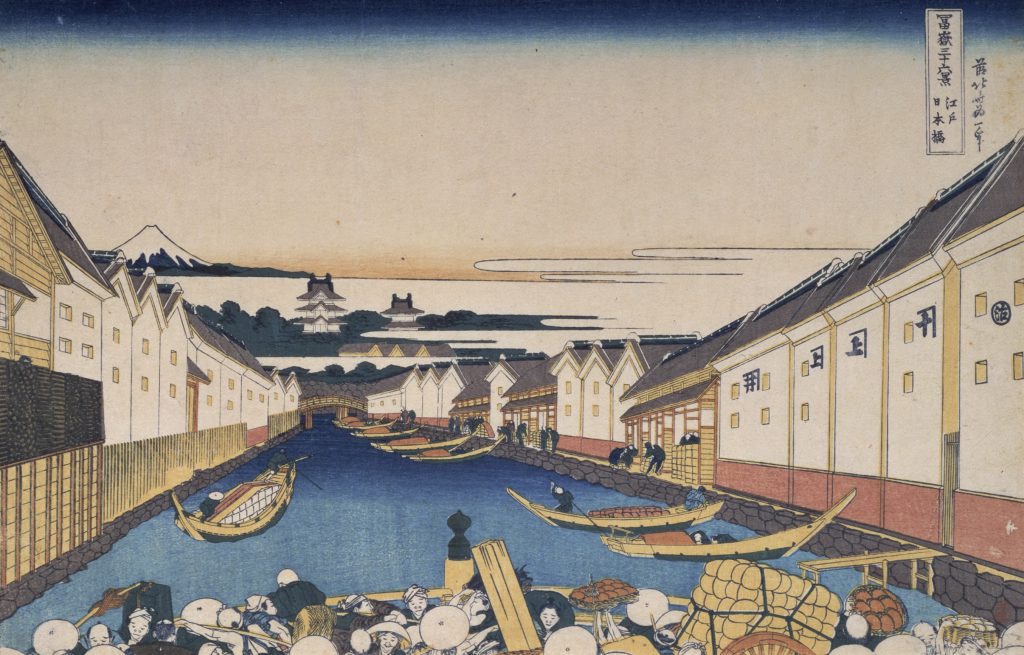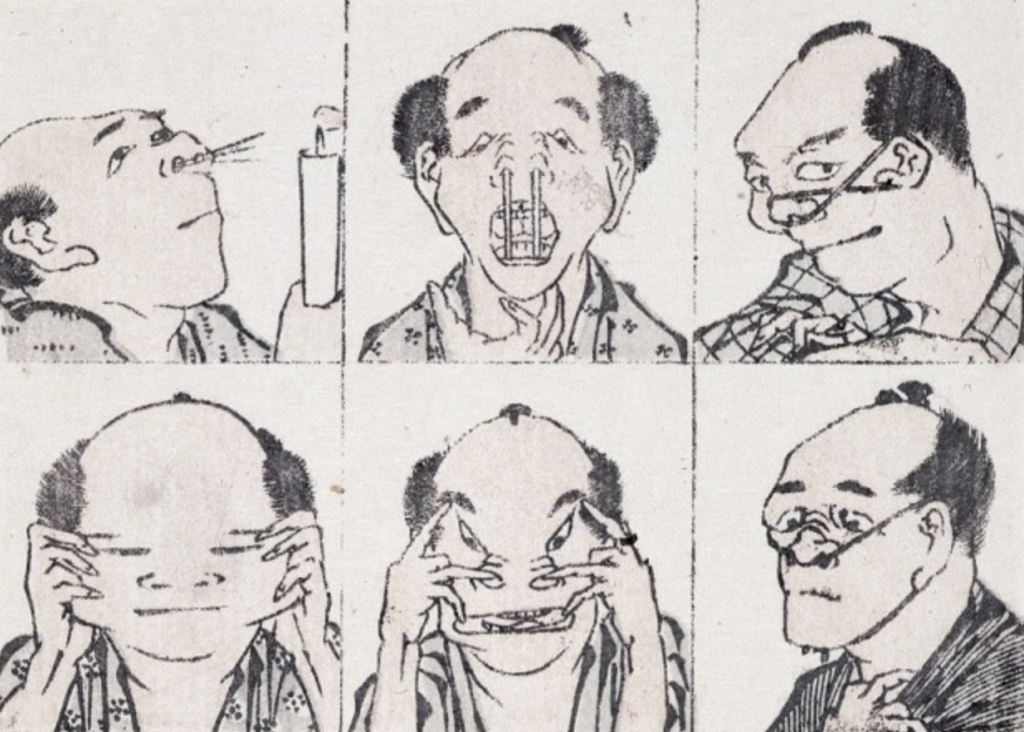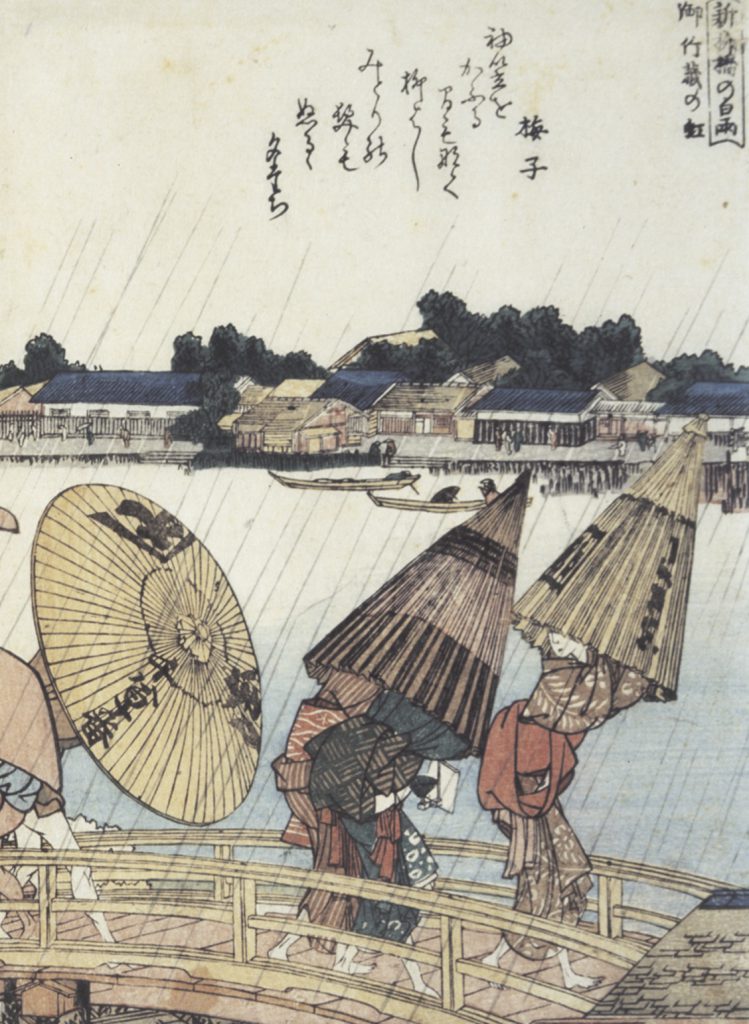30,000 works in his lifetime
Katsushika Hokusai (1760-1849) was an ukiyo-e artist active in Edo (present-day Tokyo) during the 18th and early 19th centuries. His childhood name was Tokitaro, and later he was also known as Tetsuzo, Tameichi, and Gakyojin (which means crazy of paintings).
His most famous work is the world-renowned “Thirty-six Views of Mount Fuji”. He first studied painting under Katsukawa Shunsho, and later studied the Kano school, Tosa school, Rimpa school, and Western-style painting, learning Japanese, Chinese, and Western techniques. He is said to have left 30,000 works in his lifetime.

Thirty-six Views of Mount Fuji ‘Nihonbashi’ (image source: ColBase [https://colbase.nich.go.jp/])
What is outstanding about Hokusai’s work is that it is dynamic, humorous, and at the same time, extremely realistic. With a keen sense of observation, Hokusai captured exactly what he saw and painted everything from people to landscapes to animals.

Unique portraits from ‘Hokusai manga'(cartoon)
Bold, unique compositions and distinctive colors
Sometimes Hokusai painted bamboo groves in the foreground that almost completely covered the picture, and other times he freely placed Mt. Fuji in a size that had nothing to do with the actual scale of the painting.
Great Wave is one of the “Thirty-six Views of Mount Fuji” and was painted around 1830-32. This ukiyoe is officially called “Kanagawa-oki Namiura”. On the Tokaido way which was connecting Nihonbashi, Tokyo and Sanjo, Kyoto, “Shukuba” were established at regular intervals, and “Kanagawa” of the title refers to the Kanagawa Shuku, which was located in the area around present-day Yokohama Station.
This work depicts Mt. Fuji seen offshore from Kisarazu, Chiba Prefecture, on the opposite side of Tokyo Bay. In other words, these large waves are the waves standing in Tokyo Bay.

Perhaps a composition based on Western perspective would not show this relationship between the waves and Mt. Fuji. The waves in the foreground seem too large. In addition, the way the waves are painted shows the pointillism technique that would later be used extensively by the Impressionists in France. The extremely realistic depiction of the breaking waves and the overly bold composition of the painting capture the viewer’s eye. The charm of this painting may lie in the exquisite balance between such precision and free and dynamic composition.

The blue color of this painting, also known as “Hokusai blue,” is partly made from “Berlin indigo,” which was produced in Berlin. Hokusai used different shades of indigo to express the movement of the waves, and even the outlines of the waves are painted in indigo. The charm of this work lies in Hokusai’s unique use of color.

Thirty-six Views of Mount Fuji ‘Ryogokubashi’ (image source: ColBase [https://colbase.nich.go.jp/])
Impact on Europe
Ukiyo-e was not art as we know it today, but rather a product and entertainment that could be purchased and enjoyed by anyone. As a result, Ukiyo-e were easily discarded after viewing, or reused as paper to wrap tea bowls and plates when people moved out of their apartment.
When Japanese ceramics were exported to Europe in the 19th century, much of the paper used to wrap them was Ukiyo-e discarded in this way. It is said that Europeans, especially French Impressionists Monet, Manet, Cézanne, and Van Gogh, were shocked by this “packing material”. Thus, Japonism spread in 19th century Europe.

Thirty-six Views of Mount Fuji ‘Toutoumi Sanchu’ (image source: ColBase [https://colbase.nich.go.jp/])
Hokusai was also famous for his long life, and he died at the age of 88, which was a exceptionally old age in Japan at that time. He changed his pen name dozens of times, devoted himself to painting, moved dozens of times when his room became messy (it is said that he moved 90 times in his lifetime), and was careless about food and clothes. His passion for painting may have been the reason for his long life.
Such passion is the reason why Hokusai’s paintings still capture the hearts of many people.

‘Ehon Sumidagawa Ryogan Ichiran’ (image source: ColBase [https://colbase.nich.go.jp/])

